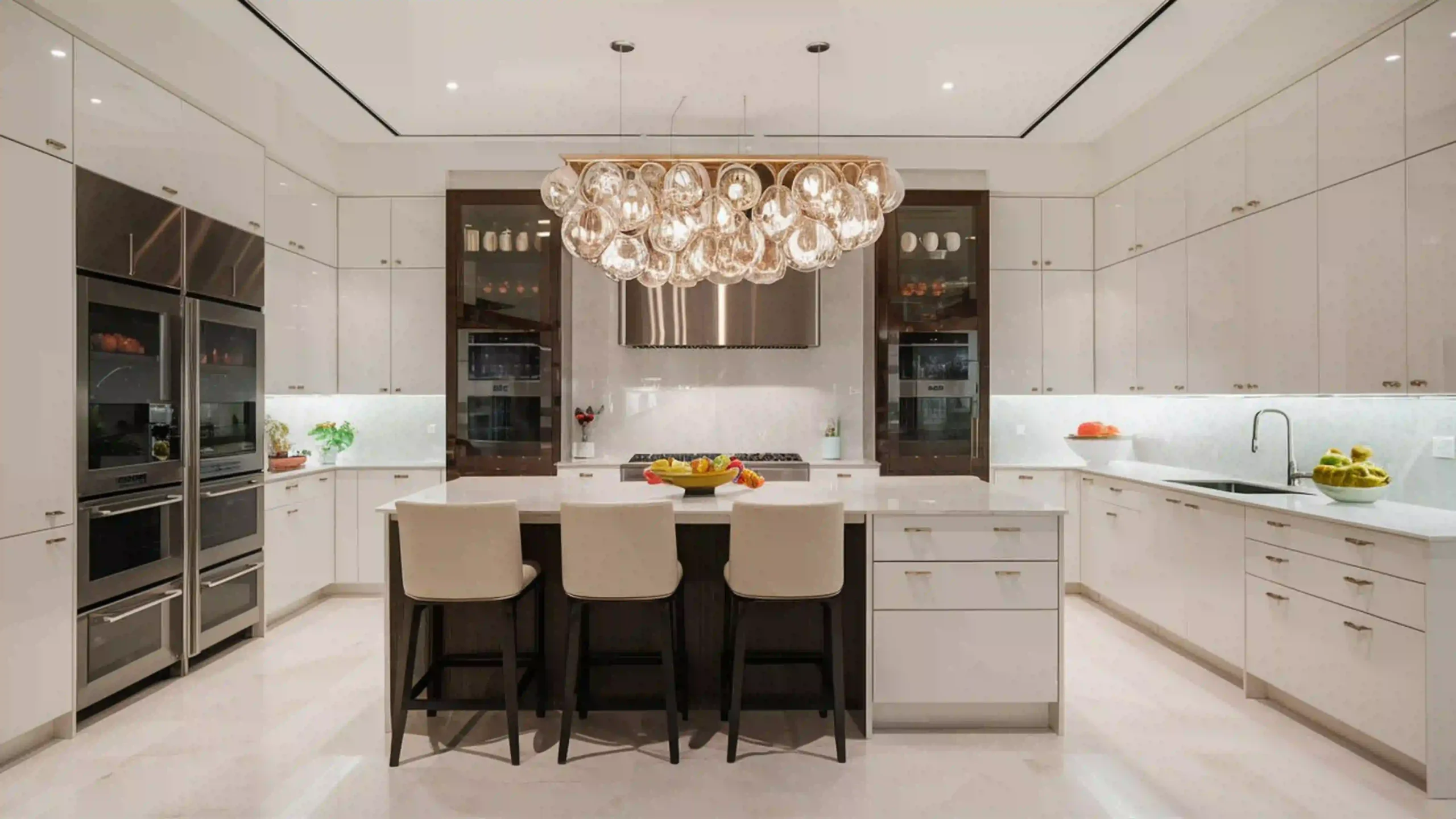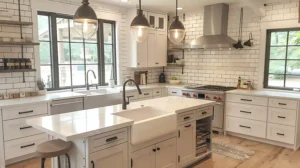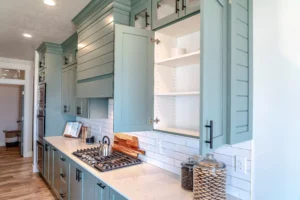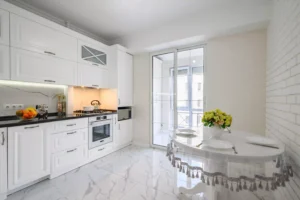Introduction
Have you been searching for how to reface kitchen cabinets without blowing your budget on a full remodel?
Cabinet refacing is one of the most cost-effective ways to give your kitchen a brand-new look. Instead of tearing everything out, you upgrade the cabinet doors, drawer fronts, hardware, and veneers for an instant transformation.
This method is budget-friendly, eco-friendly, and less disruptive than full replacement. You can refresh outdated cabinets without the mess or expense of demolition.
If you want to find the best materials for refacing kitchen cabinets, learn how to save money, and avoid common mistakes, this guide will walk you through each step.
Table of Contents
1. What Does Refacing Kitchen Cabinets Mean?
Refacing means updating your kitchen cabinet doors and drawer fronts while keeping the existing cabinet boxes.
You replace the exterior with wood veneer, laminate, or thermofoil cabinets, add new hardware, and apply fresh finishes.
It’s faster and more affordable than full replacement, yet gives the same “new kitchen” feel.
2. Benefits of Cabinet Refacing vs. Cabinet Replacement
Refacing saves up to 50% of remodeling costs compared to full cabinet replacement. It reduces landfill waste, making it an eco-friendly kitchen remodel option.
Unlike cabinet refinishing or painting, which only updates the surface, refacing includes new doors and fronts, delivering a more dramatic transformation without the hassle of demolition.
3. How to Reface Kitchen Cabinets: Step-by-Step Guide
Here’s how to reface kitchen cabinets step by step:
- Remove cabinet doors and drawer fronts.
- Clean and prep surfaces (a missed step many homeowners skip)
- Sand and apply veneer or laminate cabinet panels
- Replace cabinet hardware with modern pulls or soft-close hinges.
- Install new doors and drawer fronts.
Refacing your kitchen cabinets yourself usually takes two to five days, depending on the size of your kitchen. With the right tools, you can update your cabinets on a budget and still get a great-looking result.
4. Best Materials for Refacing Cabinets (Wood Veneer, Laminate, Thermofoil)
When deciding how to reface kitchen cabinets on a budget, materials matter:
- Wood Veneer Cabinets: Classic look, natural warmth, but slightly pricier.
- Laminate Cabinet Doors: Affordable, durable, easy to clean, and available in endless colors.
- Thermofoil Cabinets: Great for moisture resistance, long-lasting, and sleek modern finishes.
Choose based on your budget, durability needs, and whether you want glossy or matte finishes.
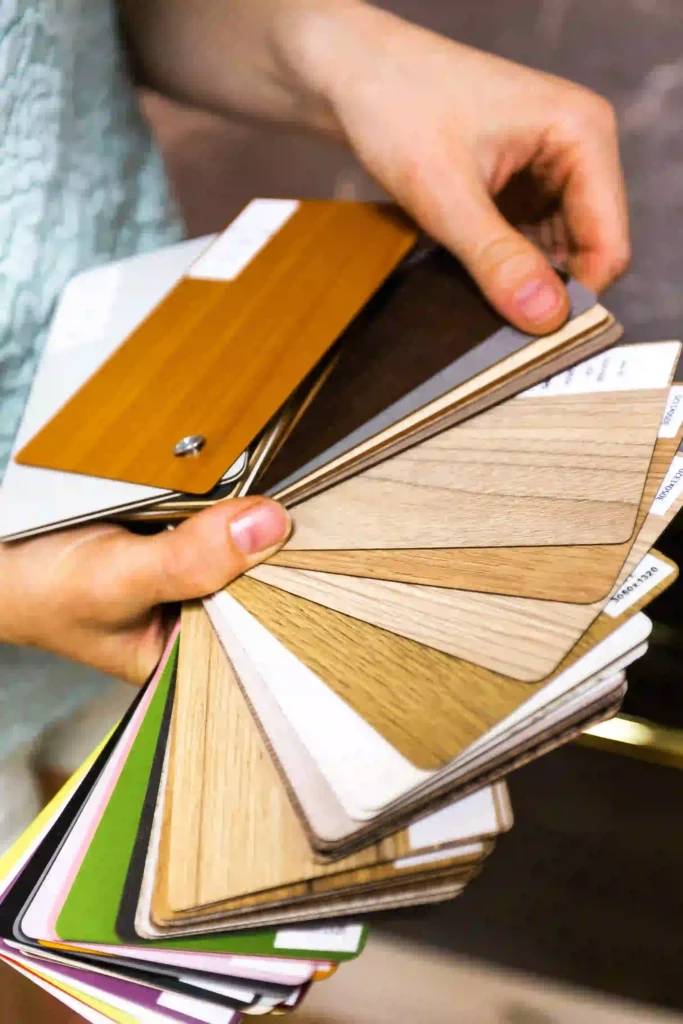
5. Cost of Refacing Kitchen Cabinets (Per Square Foot Breakdown)
On average, refacing cabinets costs between $4,000 and $9,500, or about $125 to $250 per linear foot, depending on the materials and labor.
Doing the work yourself can save a lot of money, while hiring professionals gives you extra durability and a precise finish.
Refacing is much more affordable than replacing all your cabinets, which can cost $15,000 or more.
6. DIY Cabinet Refacing vs. Hiring Professionals
Doing it yourself is a good choice if you’re handy and want to save on labor costs. You’ll need tools like sanders, adhesive rollers, and measuring tape.
Professionals can offer solid wood or MDF cabinets, precise installation, and warranties. If your kitchen has a custom layout or structural problems, it’s usually best to hire a contractor.
7. Styling Tips: Shaker Style, Matte vs. Glossy, Hardware Updates
To elevate refaced cabinets:
- Shaker Style Cabinets: Timeless, versatile, and always in trend.
- Matte Finish Cabinets: Modern, chic, and fingerprint-resistant.
- Glossy Cabinets: Reflective, sleek, and ideal for small kitchens.
- Hardware Updates: Brass knobs, matte black pulls, or stainless handles instantly modernize cabinets.
Pair your updated cabinets with under-cabinet lighting and stylish backsplashes for a complete makeover.
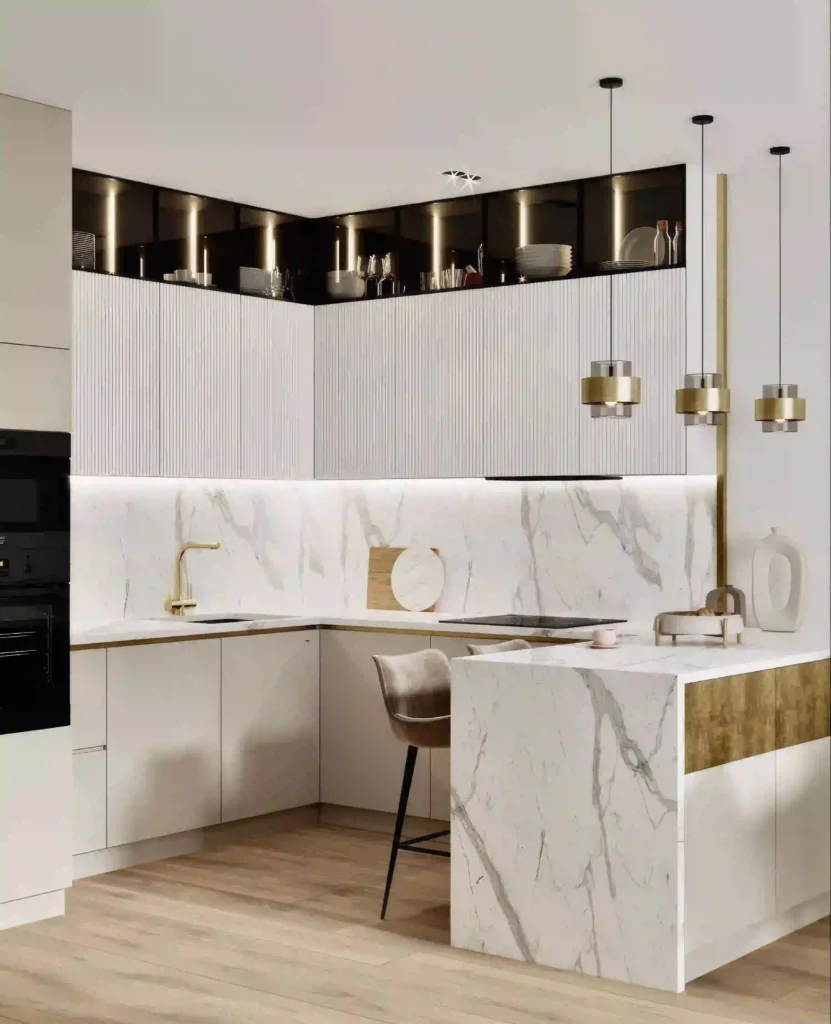
8. Common Mistakes to Avoid When Refacing Cabinets
Many homeowners make mistakes when learning how to reface kitchen cabinets. Common ones include:
- Skipping cleaning and surface prep
- Choosing low-quality veneers or laminates
- Mismatched cabinet fronts and boxes
- Neglecting hinges and hardware updates
- Rushing installation without accurate measurements
Avoiding these errors. You avoid these mistakes, your project will look better and last longer.
9. Maintenance Tips for Refaced Cabinets
To keep refaced cabinets looking new:
- Wipe regularly with mild soap and water.
- Avoid harsh chemicals that damage laminate or thermofoil
- Check hinges and handles for loosening over time.
- Polish the wood veneer occasionally to maintain shine
If you take care of them, refaced cabinets can last ten to fifteen years or even longer.
Conclusion
Learning how to reface kitchen cabinets is a great way to upgrade your kitchen without the stress or high cost of a full remodel.
With the right materials, like wood veneer, laminate, or thermofoil, you can give your space a whole new look in just a few days.
Refacing helps you save money, cut down on waste, and quickly refresh the heart of your home.
If you avoid common mistakes and take care of your cabinets, they’ll look great for years.
FAQ’s
Q1: How long does it take to reface kitchen cabinets?
Most projects take 2–5 days, depending on kitchen size and complexity.
Q2: Is painting the same as refacing?
No. Painting only refreshes the surface, while refacing replaces cabinet doors, drawer fronts, and applies new veneers.
Q3: Can all cabinets be refaced?
Yes, if cabinet boxes are sturdy and in good structural condition.
Q4: How much value does refacing add to my home?
Updating your kitchen can really increase your home’s resale value. Refacing is a smart way to get a good return on your investment without spending a lot on a full renovation.
